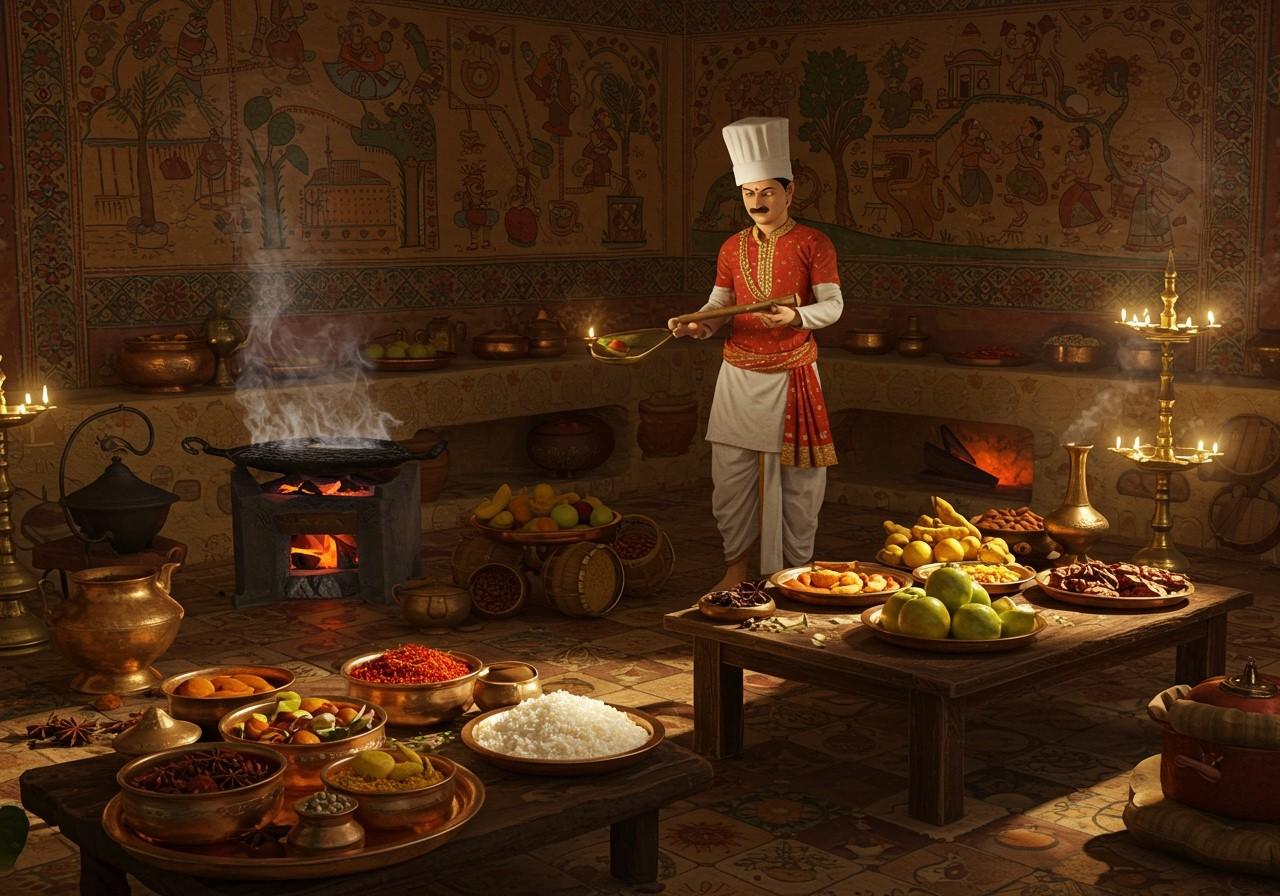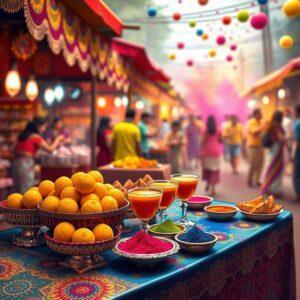Historical Background

The Gupta Empire, spanning from approximately 320 to 550 CE, stands as a golden age in ancient Indian history, renowned for its prosperity and cultural flourishing. This period saw advancements in various fields, including mathematics, astronomy, and art, significantly influencing the culinary landscape. Trade routes, cultural exchanges with neighboring regions, and the influx of foreign traders introduced new ingredients and cooking techniques, enriching the cuisine of the era.
Food held a significant role in religious ceremonies and social gatherings, reflecting its importance in daily life and festivities. Ancient texts like the Mahabharata offer glimpses into the culinary practices of the time, mentioning dishes like rice and vegetables cooked together, demonstrating the long-standing tradition of vegetarian cuisine in India.
Gupta Kachori
Gupta Kachori, a beloved savory snack, boasts deep roots in ancient Indian cuisine. This delectable treat features a crispy outer shell encasing a flavorful filling of lentils, peas, and a blend of aromatic spices. The preparation involves kneading dough, carefully crafting the filling, and deep-frying until golden brown.
Across different regions influenced by the Gupta Empire, variations of kachori emerged, showcasing the adaptability of this culinary gem. A prominent street food item and a staple during festivals, kachori offers not only a delightful taste but also nutritional value, with lentils and peas providing essential proteins. Historical anecdotes often mention kachori as a favored delicacy among both commoners and royalty.
Gupta Samosa
The Gupta Samosa, a triangular pastry filled with spiced potatoes, peas, and other tantalizing ingredients, holds a cherished place in Indian culinary history. Its origins can be traced back to the royal kitchens of the Gupta Empire, where it was likely a delicacy enjoyed by the elite.
Traditional cooking methods involve preparing a delicate dough, creating a savory filling, and frying it to golden perfection. Regional variations showcase the samosa’s evolution, featuring unique fillings like paneer, minced meat, or nuts, each adding a distinctive flavor profile. The samosa’s journey from royal tables to street food stalls underscores its cultural significance and widespread popularity.
Gupta Veg Biryani
Gupta Veg Biryani, a fragrant rice dish layered with vegetables and aromatic spices, represents a culinary masterpiece of the era. Its preparation involves marinating fresh vegetables, layering them with fragrant rice, and slow-cooking to allow the flavors to meld harmoniously.
The distinctive blend of spices, including cumin, coriander, cardamom, and saffron, defines the unique taste of Gupta Biryani. Comparing it to other regional biryanis influenced by Gupta culinary traditions reveals the nuanced use of spice combinations that characterize each variation. Biryani held a special place in royal feasts and continues to be a cherished dish in contemporary Indian cooking, often gracing celebratory occasions.
Influence on Modern Indian Cuisine
The culinary traditions of the Gupta Empire have left an indelible mark on modern Indian cuisine. Dishes like kachori, samosa, and biryani remain popular staples enjoyed across the country. The culinary techniques and ingredients employed during the Gupta era continue to inspire present-day kitchens, showcasing the enduring legacy of these ancient practices.
Traditional recipes have been carefully preserved and adapted to modern tastes, ensuring that the flavors of the past continue to delight palates in the present. The cultural significance of Gupta cuisine is evident in today’s food landscape, underscoring the lasting impact of this rich culinary heritage.
Cultural and Ritual Significance
Food in the Gupta Empire held deep cultural and ritualistic significance. Specific dishes were integral to religious ceremonies and social gatherings, symbolizing prosperity, abundance, and auspiciousness. This symbolism is reflected in the art and literature of the time, further highlighting the importance of food in Gupta culture.
The connection between food and health was recognized in ancient Indian medicinal practices, with dietary recommendations playing a role in maintaining well-being. Seasonal and regional variations in Gupta cuisine reflected the agricultural cycles and the availability of local produce, demonstrating a respect for nature and its bounty.
Essential Pooja Items for Traditional Gupta-Style Cooking
Poojn.in, India’s leading cultural goods and services store, offers authentic ritual items that connect you to the rich culinary traditions of the Gupta period. The Pure Pik Whole Turmeric Sticks (Haldi Gatiya/Gota Halud) are perfect for adding an authentic touch to your Gupta-inspired dishes. Turmeric, a staple spice in ancient Indian cooking, is known for its vibrant color and health benefits. Green Mung Dal and Supari (Areca Nut) are other essential ingredients used in various traditional recipes from the Gupta era.
For a truly immersive experience, consider using traditional cooking vessels like the ones found on Poojn.in. While we don’t have specific Gupta-era vessels, explore our range of flammables for creating the ambiance of ancient Indian kitchens. Enhance the flavors of your dishes with premium spices like Large Size Elaichi (Black Cardamom). Complete your traditional cooking experience with Camphor Dust, used in many ancient Indian rituals and cooking practices.
Visit Poojn.in to explore our complete collection of puja items and traditional Indian ingredients. We offer high-quality products and convenient doorstep delivery across India.
Conclusion
Exploring the culinary heritage of the Gupta Empire unveils a captivating world of flavors and traditions that continue to shape modern Indian cuisine. From the crispy kachori to the savory samosa and the aromatic veg biryani, these ancient dishes offer a glimpse into the vibrant culinary tapestry of the past. The legacy of the Gupta Empire’s food practices endures, reminding us of the importance of preserving and celebrating traditional recipes. By savoring these timeless dishes, we connect with India’s rich history and cultural heritage, honoring the flavors cherished for centuries.


